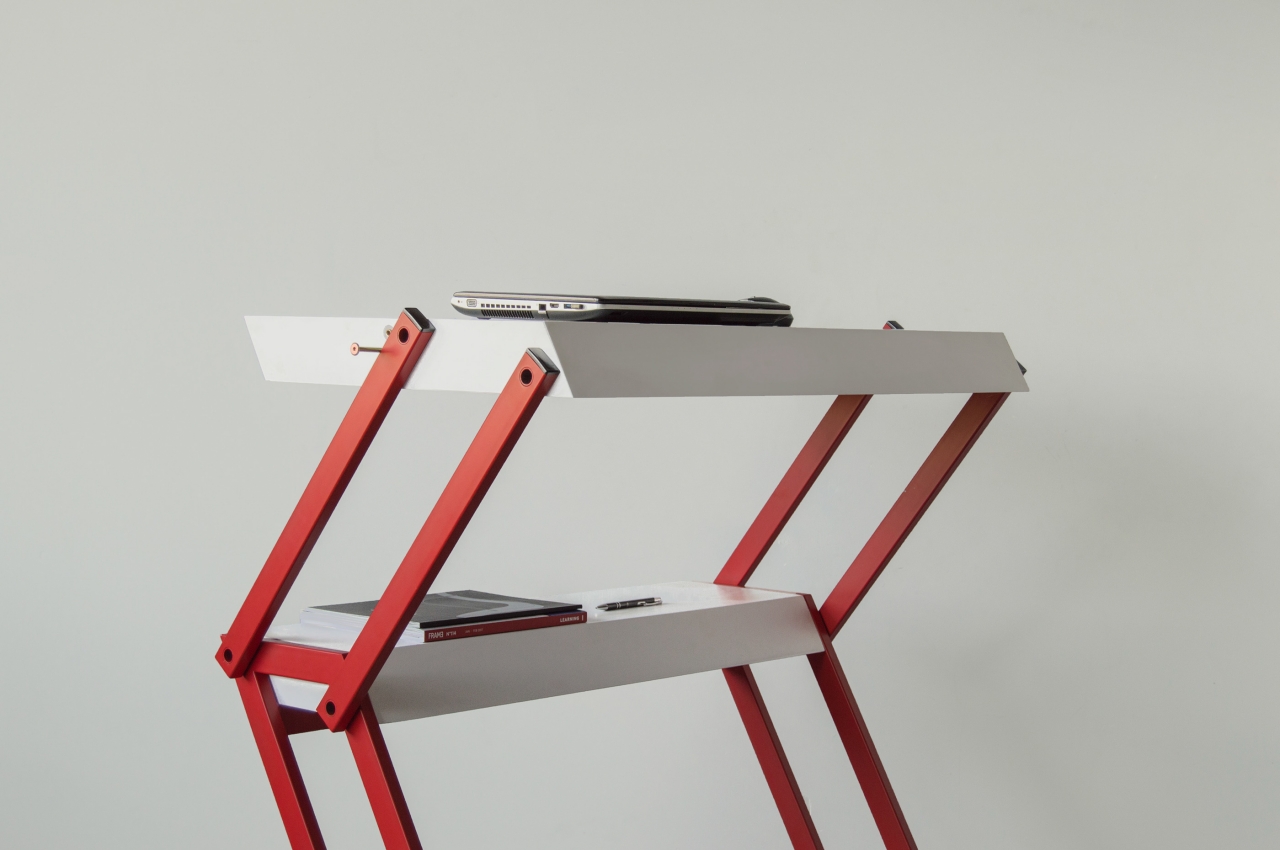
With this more mechanical standing desk concept, you can enjoy the benefits of a healthier working lifestyle without breaking your back or your bank.
Our reliance on computers to get work done these days has translated to spending hours sitting in front of a computer. That’s not even considering some of the recreational activities that we do on our desks, at least for gamers or those who prefer watching videos on their laptops and desktops. Health experts naturally discourage such a sedentary lifestyle and advise people to stand up and walk every so often. Some even recommend standing desks so you can actually work without sitting down at all. Standing desks aren’t uncommon nowadays, but not everyone that should use them can actually afford most of the options available. This concept, however, defies convention and uses a simple mechanism to switch between a regular desk and a standing desk, eschewing the electronics and motors that make these desks more expensive than they should be.
Designer: Simonas Palovis
It is just as bad to spend all your time standing up as it is sitting down. You do need to give your legs a break or have them moving once in a while rather than staying stationary. It’s for this reason that many standing desks are designed to raise or lower their tabletops to switch between different heights and configurations. More often than not, those use motors, gears, and electronics to do the work rather than have you manually adjust the levels.
That’s definitely more convenient and removes the hesitation some people might have with standing desks, encouraging them to use the feature more often. It also makes the desks more complicated and more expensive than a normal desk. There’s also the problem of becoming completely unusable when the motorized system breaks and leaves you stuck in either mode until you get it repaired. Presuming it can be repaired at all.
The Axis concept removes all those variables while still keeping a simple system to switch from a regular desk to a standing desk and back again. Specifically, it uses a simple axis mechanism, hence the name, to move the larger desk surface up or down as needed. As a bonus, part of the desk actually remains in position and is a good place to put items you’re less likely to move, like supplies or desk organizers. It can even be a temporary bookshelf that stays in the back of your desk when sitting or beneath the table when standing.
The simplicity of this system means that manufacturers can keep the number of parts and materials down to a minimum, driving down the cost of the desk itself. It also means that more sustainable materials can be used since it has no need for electronics or even plastics. Replacement parts could be easier to purchase, too, presuming owners themselves can’t make those out of standardized designs. That goes a long way in prolonging the life of the desk, which isn’t always what many standing desks deliver.